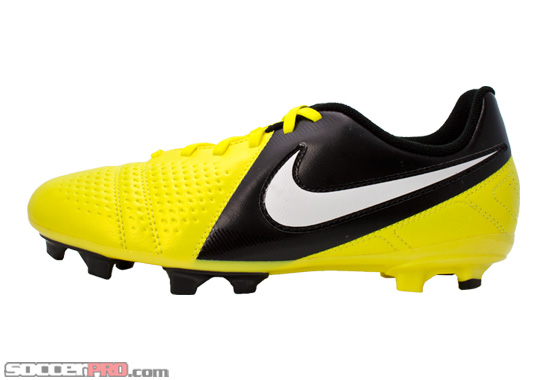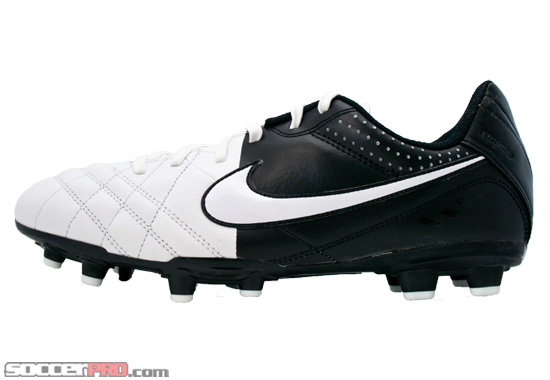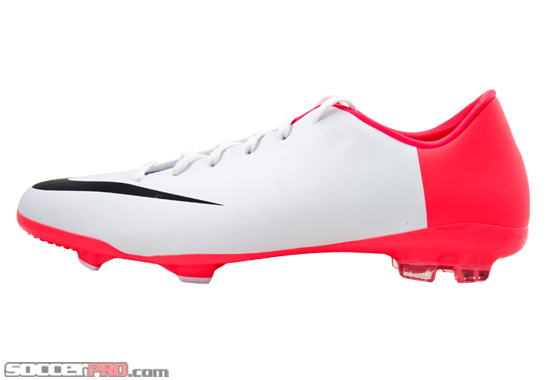It used to be that soccer shoes were black and you picked the size you needed and off you go. Times have changed. You can now choose from a variety of colors, brands, prices and styles for soccer players of every age. For new players and parents of new players it can be overwhelming. This guide tries to help breakdown the most important issues you need to consider when purchasing soccer shoes.
NOTE: This guide is best for players that fit between 10K and size 6 youth soccer shoes. If you need a size smaller than 10K we suggest you visit soccerpro.com and use the Just Show Me filter in our Soccer Shoes section. Select Kids and the brand and size you need to view what is available.
1). STYLE v FUNCTION
If a soccer shoe doesn’t fit well or if it doesn’t work on the playing surface you will be very disappointed in your purchase. Try to minimize the number of styles to choose from on the basic ‘functional’ characteristics of a shoe before worrying about color and brand. We know this can be difficult for a fashion-sensitive soccer player but it’s very important and should be your first step. You will be able to trim down from the dozens of options to a much more manageable selection that will still offer several brands and colors.
> Go to the SoccerPro.com Youth Soccer page to start your search.
2). THE FIELD – GRASS, FIELD TURF, CARPET, GYM
Where you play determines the first major decision you’ll make. If you’re playing outside most of the time you’ll be on a grass field. Some indoor facilities have a turf field that plays like grass – commonly known as Field Turf. You will see a lot of little black specs on the field. That’s the ground up rubber tires used to allow the synthetic grass blades to move and flex with the players running on top of it. Other indoor places will use the flat carpet or a gym floor to play on.
Grass and artificial turf fields **
- Firm Ground Cleats – the typical cleat you see with most soccer shoes.
- Turf Shoes – lots of little nubs on the bottom of the shoe to grip hard, dry ground and artificial turf fields.
** For lil’ soccer players younger than 7 or 8 it’s also okay to use indoor soccer shoes. The player is so light at that age that cleats don’t sink in to the surface of the field and don’t provide any benefit. An indoor shoe is a great solution because it can also be used for everyday wear.
Gym and carpet:
- Indoor Shoes – these a flat soled and perfect for hard, flat surfaces. And as an added bonus you can use these shoes at school, work or just for walking around.
3). PRICE
The price of youth soccer shoes ranges from $20 to $120. With soccer shoes, like many things, you get what you pay for. They will improve in quality, comfort and durability as you spend more on them. That doesn’t mean you get a bad shoe for $20. Quite the contrary, you get a very good entry level shoe but the $35 and $50 shoe will be easier on your foot. The $120 shoe will provide the ultimate in soccer shoe experience.
Try to have a budget before shopping for soccer shoes. For every additional $10-$15 you spend you will see a difference in the quality of shoe.
4). SIZE
This can be a quick way to pare down the list of options to purchase. Not every shoe is made in sizes less than youth size 1. By using SoccerPro.com “Just Show Me” filter you can select the shoe size you need and it will only return styles that are available.
If you don’t know what size to purchase try a ½ size larger than your tennis shoe size. That way it won’t be too small and you can wear a second pair of socks (little booty socks work well) to fill in the space until you grow into the shoe.
5). MATERIALS – IT’S MADE OF WHAT?
Soccer shoes are primarily made of two different types of material – synthetics or leather.
Most youth size shoes are synthetic until you get to $45 or $50. The synthetics have come a long way and are definitely more comfortable than the ‘plastic’ shoes of days gone by. Synthetic material doesn’t retain water and they will loosen up after playing in them for a couple practices.
So why is leather more expensive? Leather is a durable, natural material that actually conforms to your foot instead of just loosening up with a couple practices. That helps the player feel comfortable, slip less in the shoe and reduce the chance of blisters. Leather is also softer and will stretch to allow for more growth which helps them last longer.
6). COLOR AND BRAND
Now you have a great selection of shoes that will work for you. It’s time to think about your favorite color and whether it matters if the brand of shoe needs to match your uniform. Choosing the right color and brand can be fun. Your soccer shoe needs to match your personality and it almost never literally has to match your team jersey (check with your coach first).
If you don’t see the color or style that works you might consider revisiting some of your earlier decisions. Maybe you can adjust what you want to spend or go with leather instead of synthetic. The right shoe is definitely out there.




